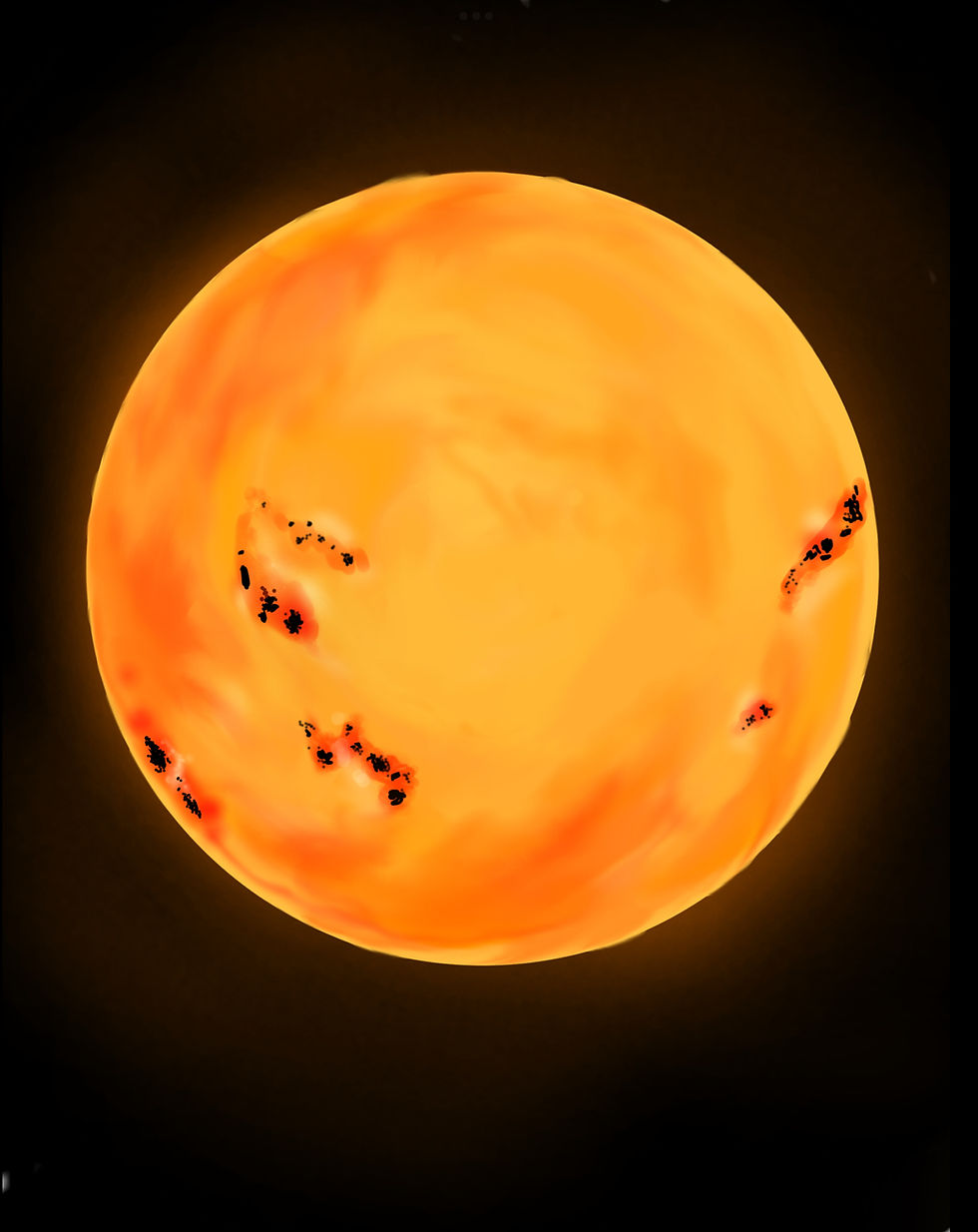Author: Lucy Chen
Editors: Jaylen Peng and Peggy Yang
Artist: Serena Zhou
Sunspots have been a subject of scientific research for many years, as they can significantly impact the Earth's climate and weather patterns. Visually, they are the dark areas on the sun's surface that are caused by strong magnetic activities, some going up to 2500 times that of Earth's magnetic field. Because of the strong and chaotic magnetic disturbances in these areas, they periodically shoot out electromagnetic radiations from the Sun's core.

One of the major impacts of sunspots is their effect on the Earth's atmospheric circulation. These changes can lead to temperature and precipitation fluctuations, drastically changing agricultural cycles and regulations in the electricity industry. A study published in the journal Nature found that sunspots can affect the Earth's magnetic field, potentially leading to various consequences, including disruptions in power grids and other electronic systems and increased radiation exposure for astronauts and airline pilots. Additionally, sunspots have been linked to changes in the Earth's ozone layer, which can change the amount of ultraviolet radiation reaching the Earth's surface.
Sunspots have been observed for centuries, with some historians noting their appearance as early as the 4th century BC. Some scientists believe that disturbances in the sun's convective zone may play a role in their cause, while others have suggested that the sunspot cycle is linked to variations in the sun's interior temperature which may explain why sunspots are linked to variations in the Earth's climate patterns. A study conducted by researchers at the University of Reading in the UK found that sunspot activity could lead to colder winters in Europe by altering the jet stream. The jet stream is a narrow band of strong winds that moves air across the planet and is critical in determining weather patterns. Sunspots can disrupt the jet stream and cause it to shift, leading to colder temperatures in some regions.

Sunspots can also cause droughts in various parts of the world, including the US, Europe, and Africa. As per a study published in the journal Nature Communications, periods of high sunspot activity were associated with droughts in these regions. Researchers used tree-ring data to analyze the impact of sunspots on climate patterns and found that these events were linked to droughts in the regions mentioned above. As our understanding of sunspots continues to evolve, it is crucial to continue researching and monitoring these phenomena to mitigate their effects on our planet.
Citations:
Haigh, J.D. "The Sun and the Earth's Climate." Journal of Atmospheric and Solar-Terrestrial
Physics, vol. 73, no. 13, 2011, pp. 1282-1287.
Labitzke, K. & Van Loon, H. "The Sun's Impact on Climate." Nature, vol. 329, 1987, pp. 126-
127.
Qian, L. et al. "Solar and Anthropogenic Forcing of the Tropical Pacific Atmosphere." Journal
of Geophysical Research: Atmospheres, vol. 122, no. 16, 2017, pp. 8768-8780.
Lockwood, M., et al. "Are cold winters in Europe associated with low solar activity?"
Environmental Research Letters, vol. 13, no. 1, 2018.
Anchukaitis, K.J., et al. "Tree rings reveal the globally coherent signature of cosmogenic
radiocarbon events in 774 and 993 CE." Nature Communications, vol. 8, no. 1, 2017.
Comments